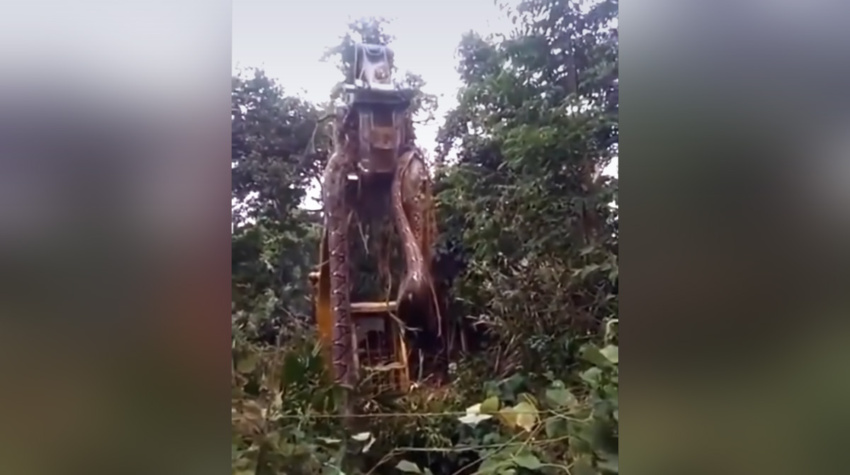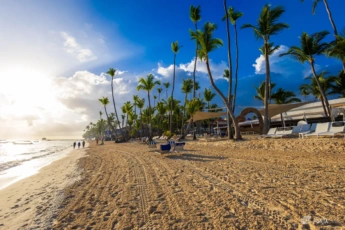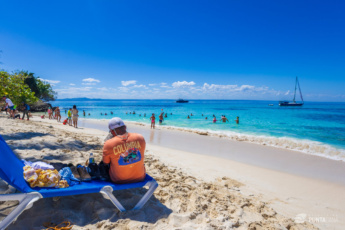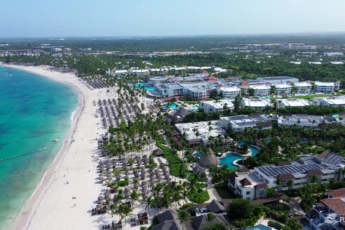Are There Any Poisonous Snakes in the Dominican Republic?
The Dominican Republic has a tropical climate and jungles with over 900 miles of coastline. This country is known for its range of wildlife and, of course, there are some snakes. About 20 species are found in the central part of the country, mostly in the jungle. But surprisingly, that there are no poisonous or dangerous snakes in the country.
Moreover, chances of meeting a snake in the Dominican Republic are very low. Some snakes are in danger of extinction, and others are hunted down for medical purposes (traditional medicine).
To sum up, do not be afraid – no snakes are lethal to people in the DR. Moreover, there are practically no snakes in the resort areas and the most vicious predator there – is the mosquito :))
Chances to run into snakes in Punta Cana
and other Dominican resorts
All Dominican resorts are safe and free from snakes. You can’t find them sliding around in any of the resort areas of Punta Cana, where you like to swim, shop, eat and drink.
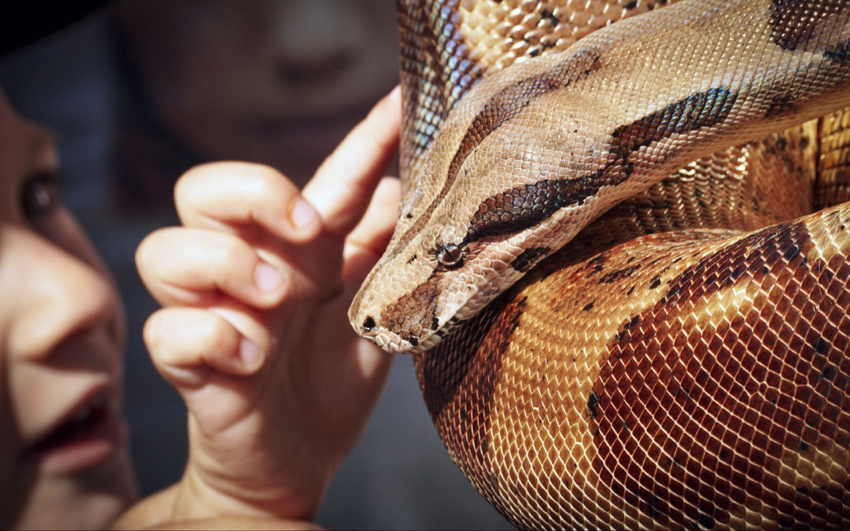
Meeting a Snake Man could be your only chance to see a snake in the DR
All snakes on the territory of the Dominican Republic are very timid. Probably, this is the main reason you seldom see them. A snake will not attack you, it would rather try to escape as fast as possible.
But there is always a chance of meeting a Snake Man walking across the beaches of resort towns. They offer tourists to take a picture with a snake, and this could be your only chance to see a Dominican snake… One way or another, but we still list below those few snake species that can theoretically be found in the Dominican Republic, if you try hard.
Snakes of the Dominican Republic
| Common name | Length (cm) | Habitat | Description | Venomous? |
|---|---|---|---|---|
| La Hotte Blind Snake | 10–35 | Underground | Blind, resembles a worm, sensitive to vibrations | No |
| Hispaniola Racer | Up to 200 | Ground | Spreads a hood when threatened, non-lethal venom | No |
| Haitian Dwarf Boa | 30–60 | Stone rubble, crevices, near water | Miniature boa, good swimmer, hunts frogs, toads, and small lizards | No |
| Catesby’s Pointed Snake | Variable | Trees and shrubs | Arboreal, excellent camouflage, better vision than most snakes | No |
| Pointed Snake | Variable | Botanical Garden of Santo Domingo | Green, brown, or gray; pointed snout; movements mimic swinging branches | No |
| Blunt-Headed Tree Snake | 80+ | Shaded areas of tropical rainforests | Brown with dark patches, large eyes, nocturnal | No |
| Hispaniolan Vine Boa | Up to 100 | Dry forests near the Haiti border | Slender body, unique head shape, curls into a ball when threatened | No |
| Hispaniolan Boa | Up to 400 | Various habitats | Largest snake in the Dominican Republic; non-slippery, dry scales | No |
If you want to find out more about snakes in the Dominican Republic, continue to read!
Black snakes in the Dominican Republic
Almost all dark-colored snakes are called black snakes. In the Dominican Republic, most of them are from adder or worm families and are practically harmless.
1. La Hotte Blindsnake
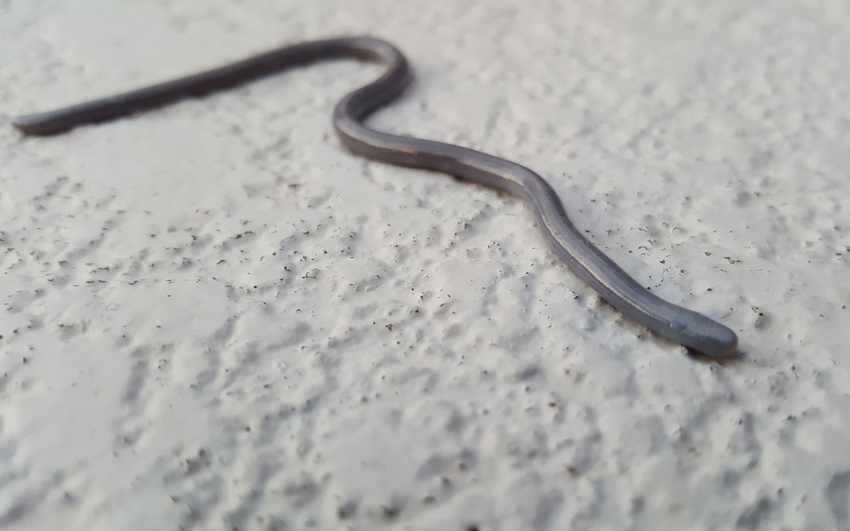
La Hotte Blind Snake
This snake looks like a shoelace. Maximum total length is about 30 cm. This defenseless blind baby is hunted even by some insects. Because of that, it must hide deeply under the ground.
It only crawls out after the heavy rains and can be easily mistaken for a worm. Its eyes were severely reduced and usually barely translucent. That makes them totally blind but very sensitive to vibrations. By the way, all snakes have poor vision. Is a blind snake poisonous? Not at all.
2. Hispaniola Racer

Hispaniola Racer
A snake spread a hood? Cobra in the Dominican Republic? No, even if you want. It is a Hispaniola Racer, the longest snake in the West Indies. It can grow to a length of two meters. Hispaniola Racer acts like an Old World cobra when it feels threatened. It dramatically spreads a hood.
One more non-poisonous snake. But it has a bad character and can attack you. This snake spends most of its time on the ground. Its venom is not harmful to humans. You can only feel irritation of the skin at the site of bites.
3. Haitian Dwarf Boa
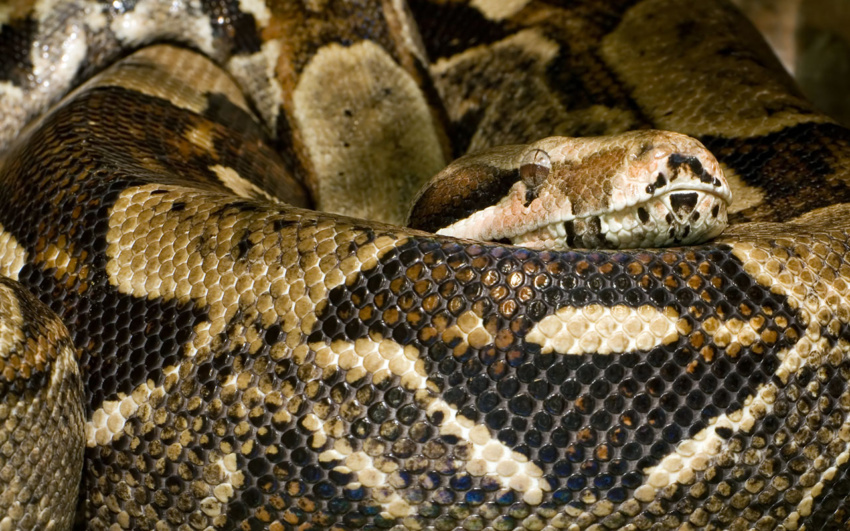
Miniature Boa Constrictor
Those 30-60 cm long boas lead a secretive lifestyle. During the day they hide in the rubble of stones, cracks, and crevices. In the twilight, they hunt frogs, toads, small lizards, and rare mammals. Haitian dwarf Boa is a good swimmer and often lives near the water.
Green Snakes in the Dominican Republic
Green snakes are named by their color. There are a few endemic species of green snakes on the island. They are found in all known resort areas except Punta Cana.
Although all types of snakes hide when a human approach, bites can happen. A few people who have ever been bitten felt only irritation in the area of the bite. No one in the Dominican Republic has ever died after such contact. So, lets talk about endemic types of green snakes in the DR.
1. Catesby’s Snake
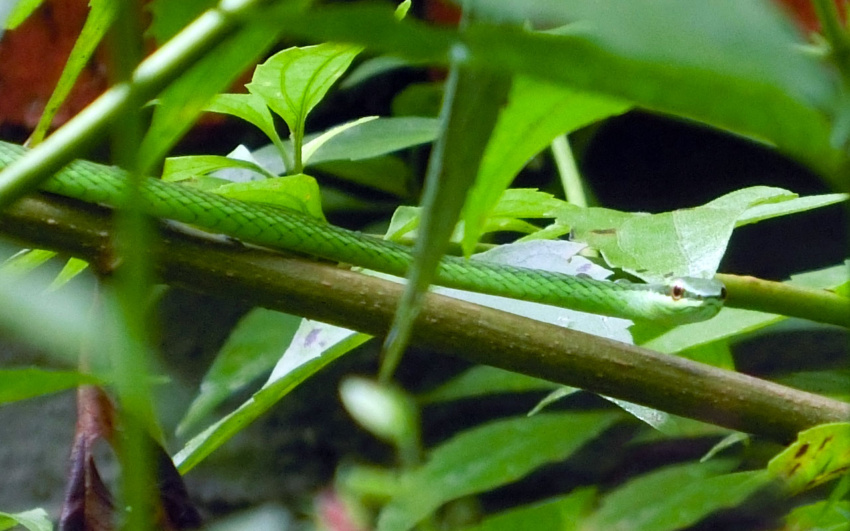
Catesby’s Pointed Snake (Uromacer catesbyi)
The first one is Uromacer catesbyi or Blunt-Headed Hispaniolan vine snake, also known as Catesby’s pointed snake. It was named after the naturalist Mark Catesby. Its body shape and green coloring mask the snake among trees and shrubs very well.
Although this snake is an arboreal species, sometimes it is found on the ground and in low bushes. Uromacer Catesbyi has better vision than other snakes. Its diet consists of lizards, frogs and birds.
2. Pointed Snake
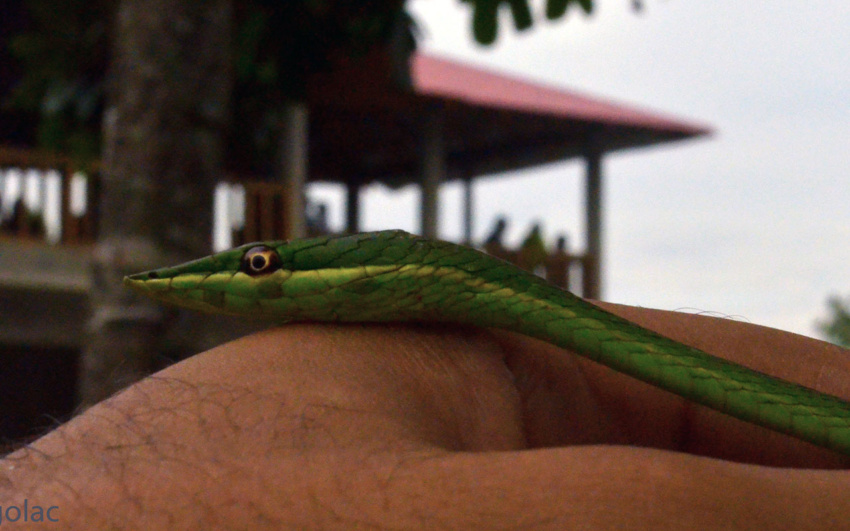
Pointed Snake (Uromacer oxyrhynchus)
The second one is Uromacer oxyrhynchus or Pointed Snake. This tree snake has green or brown or grey coloring. Its unique feature is a pointed snout. Its peculiar movements resemble swinging branches.
You can find this species in the Botanical Garden of Santo Domingo. Pointed Snake diet mainly consists of lizards.
3. The Blunt-Headed Tree Snake
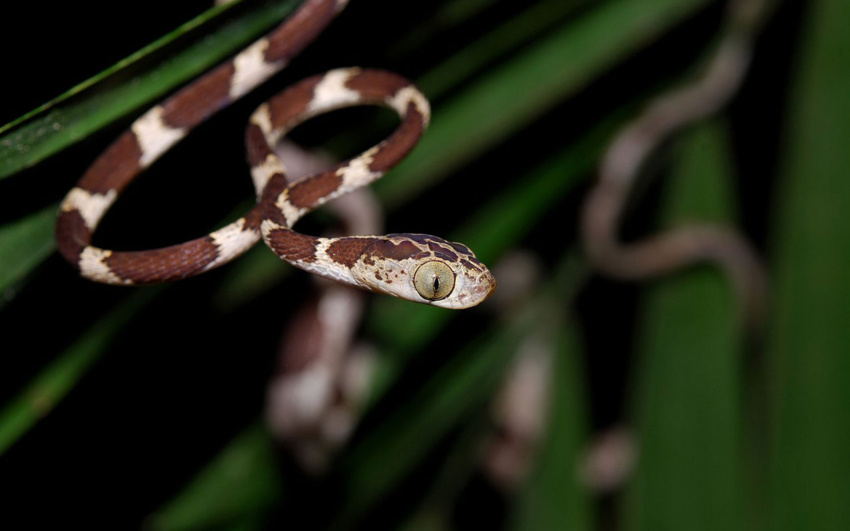
The Blunt-Headed Tree Snake
Famous but rarely seen Dominican snake is the timid Imantodes cenchoa (Blunt-Headed Tree Snake). It has brown coloring with lateral dark patches. The snake has a long, slender body, thin neck and an enormous head. The length of these snakes reaches over 80 cm. Eyes with vertical pupils cover one-fourth of its face. That fact lets them look down. You can often see these snakes in cartoons.
The Blunt-Headed Tree snake lives in the cool corners of tropical rainforests. It is a nocturnal type. They rest in very shaded areas during the day. At night they hunt small lizards, frogs, and other reptile eggs. Blunt-Headed Tree Snake venom is not lethal to humans.
Sea snakes in the coastal waters of
the Dominican Republic

There are no sea snakes in the Dominican Republic
There are currently 199 sea snake species that are known all over the World. They live in almost all tropical seas. Amazingly, there are no sea snakes in the Atlantic Ocean and the Caribbean Sea. One of the reasons they do not live in the Dominican Republic – they simply can’t get there.
- Sea snakes can’t survive in water with temperatures below 20° C. Thus, cold waters are an impassable barrier, stronger than any wall. That barrier prevented them from circling the Cape of Good Hope or the Cape of the Horn and entering the Atlantic Ocean.
- Another reason is that they can’t cross the isthmus through the Panama Canal. Thanks to freshwater lakes that separate the two oceans. In freshwater, a sea snake loses too much salt and dies.
But there are areas when sometimes regular land snakes go into the water. So, if you see one do not let fear overwhelm you. It is 100% nonvenomous.
New species of Boa in the Dominican Republic

The Hispaniolan Vine Boa (Chilabothrus ampelophis)
Hispaniolan Vine Boa is a newly discovered distinctive species of small Boa. It was spotted in 2020 by a group of naturalists. The snakes lived in the dry forest near the border with Haiti. These spymasters were undetected for about one century. And this is on the island with thousands of people around them. So it will be difficult for you to see them.
Hispaniolan Vine Boa is one of the most miniature boas in the world. They have tiny, slender bodies and not ordinary heads shape.
In total five constrictors were found. The longest boa was female type less than one meter long. The shortest one was a male type less than 50 centimeters long. Scientists didn’t see any aggressive behavior from those reptiles. In case of a threat, they curl up in a tight ball and wait.
How big are snakes in the Dominican Republic?

Giant Boa Constrictor
The Dominican Republic is a homeland of giant boa constrictors. These snakes can grow up to 4 meters long. This is not surprising, as they grow all their life. They can live for up to 30 years.
Hispaniolan Boa or Chilabothrus striatus is the biggest snake in the country. Despite their scary-looking nature, they pose no threat to humans. By the way, snakes are not slippery as they may seem. The scales covering their bodies are dry and shiny.
Funny Confusion. In 2021 in the rainforest of Dominica, local workers came across a giant snake. It was the biggest snake ever seen in the Caribbeans. It was so huge that could be lifted only by a crane. Its body was hanging down from both sides of the digger. But pay attention to the country to which it happened. Giant snake was found in Dominica, but not in the Dominican Republic. These are two different countries that are often confused for obvious reasons.
Therefore, you should not be afraid to get up in the Dominican Republic snakes, especially of this size. There are practically none of them in the Dominican Republic.
The video with the giant snake became viral. More than 79 million people have seen it in a few weeks. Nothing has been reported about what kind of snake it was or what happened to it after that. We only hope it is alive and safe now.
The average length of the most common Dominican snakes.
| Common name | Scientific name | Length (mm) |
|---|---|---|
| Blunt-headed tree snake | Imantodes cenchoa | 600 |
| La hotte blind snake | Typhlops agoralionis | 100-350 |
| Haitian dwarf boa | Tropidophis haetianus | 300-600 |
| Hispaniola racer | Haitiophis anomalus | 2000 |
| Hispaniolan boa | Chilabothrus striatus | 60-400 |
| Pointed snake | Uromacer oxyrhynchus | 1500 |
What is the best first aid in case of a snakebite?
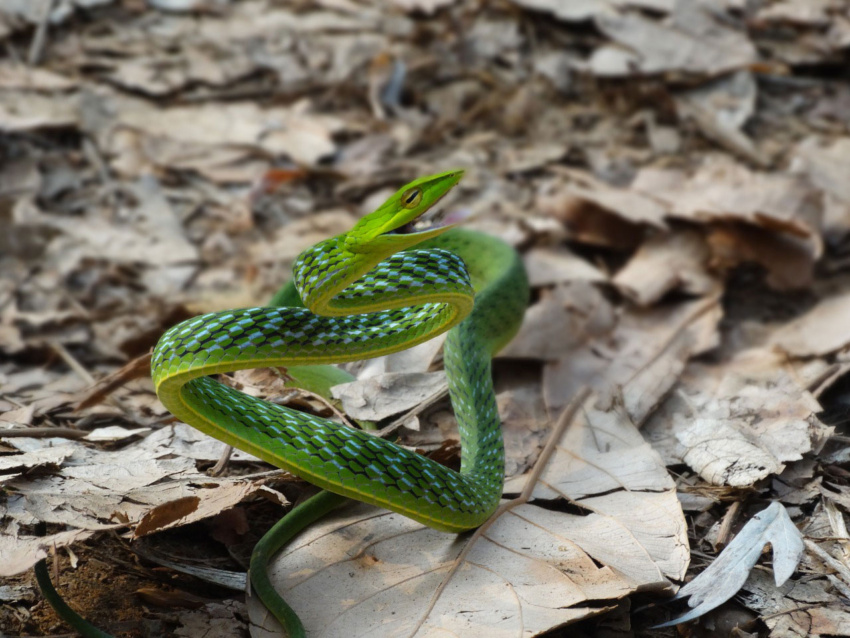
First aid in case of a snakebite
If you were accidentally bitten by a snake, you need to ask for assistance in the nearest health facility. Not because of the snake’s venom – it’s not lethal to humans. Some people can be allergic to it or the bite can be infected.
So do not wait for symptoms to appear if bitten. Just get medical help right away. And while you are waiting for a doctor to check on you, follow these simple bits of advice.
Do and don’ts when a snake bites
| What to do | What not to do |
|---|---|
| Keep calm. There are no venomous snakes in the Dominican Republic. | Cut the wound in any way. |
| Ask for assistance in the health facility. | Run after the snake and try to pick it up or harm it. |
| Wash the bite with soap and water. | Try to suck out the venom. |
| Cover the bite with a clean, dry bandage. | Apply a tourniquet or ice to the bite. |
99% of people bitten by snakes were trying to pick them up or trap them. So just don’t do it and you will be safe.
The conclusion
The Dominican Republic offers a safe and enjoyable experience for tourists, free from the dangers commonly associated with snakes. With no venomous species inhabiting the region, the chances of encountering a snake in resort areas like Punta Cana are extremely low. The snakes that do exist are timid and non-lethal, often avoiding human contact entirely. Even in the rare event of a snakebite, the effects are mild, and immediate medical attention ensures no lasting harm.
For nature enthusiasts, spotting a snake in its natural habitat can be an exciting and rare opportunity. However, most visitors will only see these creatures through encounters with “Snake Men” offering photo opportunities.
Updated on: . Author:

